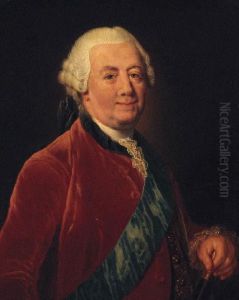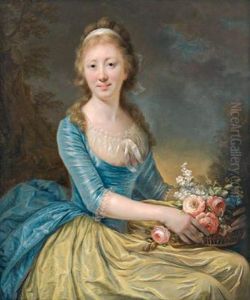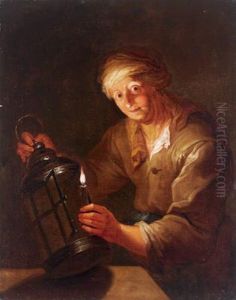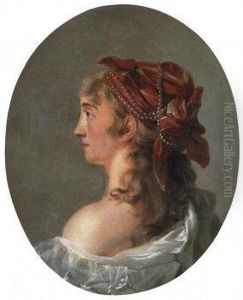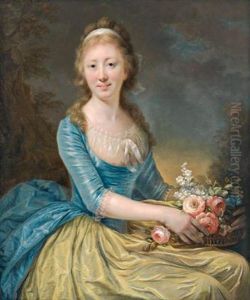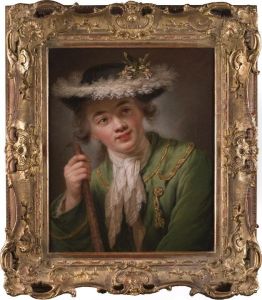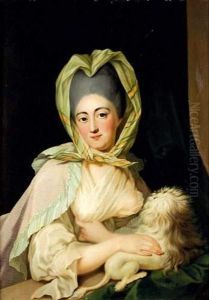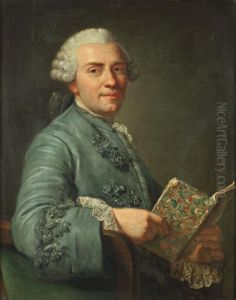Anna Dorothea Liszewska-Therbusch Paintings
Anna Dorothea Liszewska, later known as Anna Dorothea Therbusch or Therbusch-Liszewska, was an 18th-century German painter, one of the few recognized women artists of her era. Born on July 23, 1721, in Berlin, she belonged to an artistic family; her father, Georg Liszewski, was a Prussian court painter, and her brother, Georg Wilhelm Liszewski, was also an artist. This environment provided her with early exposure to art and the opportunity to develop her skills from a young age.
Anna Dorothea married the Berlin innkeeper Ernst Friedrich Therbusch in 1741 and for a time abandoned her painting career to help with her husband's business and raise their children. However, she returned to painting upon her husband's death in 1761. Therbusch received her training from her father and her brother, and later, she was able to study under the tutelage of the prominent portrait painter Antoine Pesne, who was also a court painter in Berlin.
Therbusch's career began to flourish in the 1760s. She became known for her portraits which were characterized by their insightful representation of character and their unflinching realism, often capturing the intellectual qualities of her sitters. In 1767, she was admitted to the Berlin Academy of Arts, a significant achievement for a woman at that time. However, she felt that her work was not sufficiently appreciated in Berlin, so she moved to Paris in 1765.
In Paris, Therbusch continued her work as a portraitist and became associated with the Encyclopedists, including Denis Diderot, whom she famously painted in 1767. Despite initial challenges, she was eventually accepted into the French Académie Royale de Peinture et de Sculpture in 1767, an extraordinary accomplishment for a female artist of her time. Her acceptance into the Academy was largely due to the support she received from Diderot and other influential figures of the Enlightenment.
Therbusch spent several years in Paris, but her success was limited, and she returned to Berlin in 1771. Back in her hometown, she continued her work and gained patronage from several members of the Prussian royal family. She painted notable figures, including King Frederick II of Prussia (Frederick the Great). Towards the end of her life, she was appointed court painter to the Stuttgart court of Duke Carl Eugen of Württemberg.
Anna Dorothea Therbusch died on November 9, 1782, in Berlin. Her legacy has been somewhat overshadowed by her male contemporaries, but she is recognized today as an important figure in 18th-century European art. Her work is held in various collections and museums, and she is celebrated for her contributions to portraiture and for paving the way for future generations of women artists.
